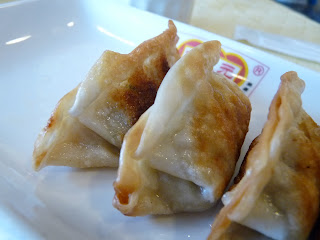Beijing Eats: LouLovesFood Favourites
I am a very lucky girl. With a twin sister living in Beijing, I couldn't possibly miss the opportunity to bring in the (Chinese) New Year and celebrate Spring Festival in China itself. With its mix of high end hotels and hutongs, street vendors and cocktail bars, it's one of my favourite cities, and was the perfect excuse for a exploration of Asian eating. Having visited China a number of times, I have a repetoir of dishes that have, as a da wei wang, become as close to my heart as the city itself...

Most of my favourite Chinese dishes seem to be the simple ones- in this instance, peanuts soaked in rice wine vinegar. They're great to have on the table to pick at as you eat, or wait for the other dishes to arrive.

 Another dish that gets ordered with almost every meal, and another dish that is brilliantly simple- egg scrambled in sesame oil with tomato. One of China's more healthy options, and impossible for my sister and I to resist.
Another dish that gets ordered with almost every meal, and another dish that is brilliantly simple- egg scrambled in sesame oil with tomato. One of China's more healthy options, and impossible for my sister and I to resist.You can find a variation of this dish in every cafe- the second photo being scrambled egg with Chinese chive and pepper.
 An absolute family favourite, very much a part of my childhood memories of China- we almost never eat out without ordering Kung Pao ji ding (宫保鸡丁) .
An absolute family favourite, very much a part of my childhood memories of China- we almost never eat out without ordering Kung Pao ji ding (宫保鸡丁) . Kung Pao has to be done correctly- the dish is essentially chickens in a Kung Pao sauce, served with peanuts (not cashew nuts folks- the peanuts are integral to the dish.) It also contains chilli, sechuan pepper and spring onion.
Gung Bao is Sechuan in origin, and has the distinctive Sechuan 'ma', Mandarin for 'numbing' and it is the pepper that gives this dish the distinctive and authentic numbing sensation. Sechuan pepper is a fragrant berry that is often fairly over powering, burning the tongue like chilli, and causing the mouth to tingle. It seems to worm it's way into many Beijing dishes, sometimes adding a delicate and aromatic Asian flavour to the dish, but more often than not, over powering the sense and leaving the mouth feeling like it's been rinsed in washing up liquid.
This particular version had been topped with sesame coated glazed walnuts. An unexpected but very welcome addition!

For lunch, a calzone like pancake, sealed like a pasty and stuffed with egg and leek. A light dim sum option that proved itself to be a delicious relief amongst all the fried, oily, (somewhat overcooked) and fatty meat dishes that are found in abundance in every meal.

 Possibly one of the most important foods of China would be its jiaozi and biozi- dumplings and steamed buns. Sold in restaurants, dumplings houses and as street food on every road, they are essential to the Beijing eating experience. Our favourites are the pork and leak fried dumplings (though they have many many manifestations) and the char sui pork Boazi (steamed buns made with a fluffy white dough and stuffed with meat)- although there is something beautiful about a sopping wet plate laden with damp steamed dumplings.
Possibly one of the most important foods of China would be its jiaozi and biozi- dumplings and steamed buns. Sold in restaurants, dumplings houses and as street food on every road, they are essential to the Beijing eating experience. Our favourites are the pork and leak fried dumplings (though they have many many manifestations) and the char sui pork Boazi (steamed buns made with a fluffy white dough and stuffed with meat)- although there is something beautiful about a sopping wet plate laden with damp steamed dumplings.
 A very beautiful example of boazi (包子)- these are the miniature versions. The larger, traditional boazi are much bigger than dumplings, relative in size to a baseball. Though served in restaurants and cafes, boazi are also an archetypal street food, cheap, filling and readily available. For my guide to Beijing street food, keep clicking back...
A very beautiful example of boazi (包子)- these are the miniature versions. The larger, traditional boazi are much bigger than dumplings, relative in size to a baseball. Though served in restaurants and cafes, boazi are also an archetypal street food, cheap, filling and readily available. For my guide to Beijing street food, keep clicking back...xxx

No comments:
Post a Comment